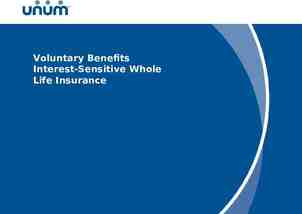Certification and Adoption Workgroup HIT Policy Committee April
10 Slides513.55 KB
Certification and Adoption Workgroup HIT Policy Committee April 28, 2014 Discussion on Incremental Rulemakings
Incremental Certification Executive Summary: “ ONC intends to update certification criteria editions every 12 to 18 months in order to provide smaller, more incremental regulatory changes and policy proposals.”
Problems with Voluntary 2015 Certification and Stage 3 There is no guarantee that the modules described in the 2015 edition will be included in stage 3. Even if included in Stage 3, if a vendor completes certification according to the 2015 edition, the vendor might need to repeat certification as part of Stage 3.
Incremental Certification Should not be used to try to advance EHR development As regulatory process, certification involves long time periods and significant testing costs. Certification should not be used for “Version 1” of standards or for new functionalities. Before certification is proposed, significant operational usage should be required—not just “pilots” and not just “balloting”. Concerned that “mandated” standards can actually interfere with consensus-driven stakeholder standards development (less careful consideration given to feedback and input once adoption of the standard is a given)
Large Effort Required to Comment Hard for small companies/providers to even digest and reply to the depth of what is proposed Examples: – Over 200 pages of text for regulations – Inclusions of dozens of standards, implementation guides, and other regulatory references – Examples: pull 2 implementation guides – Building on points from previous slide, challenging to monitor the standards/IG development as well (have to look at ongoing balloting and finalization of referenced standards)
A Narrower Approach Incremental Certification should focus on increments to previous interoperability standards. Incremental Certification should be used to update vocabularies and data definitions. Incremental Certification should be used for corrections of technical errors in previously announced standards.
Getting Early Comments It’s helpful to solicit formal early feedback on what’s being considered Should not be in a formal certification program because risks adoption into other programs when not yet ready Use an Advanced NPRM for comment instead
Discussion Policy/program alignment & leveraging the ONC HIT Certification Program Discussion
Policy and Program Alignment ONC believes this approach will address the following: – Adapt our regulations to more effectively and efficiently respond to stakeholder feedback and to support HHS healthcare delivery reform and transformation programs that may seek to leverage health IT certification; – Better our regulations by making ‘‘bug fixes’’ and other regulatory improvements as part of a more frequent rulemaking cycle; – Chart a course toward enhanced interoperability, information exchange, quality improvement, patient engagement, and patient safety that gives health IT developers more ability to predict ONC’s potential next steps; and – Deliver smaller, incremental regulatory requirements that are easier to integrate into software development cycles.
Policy and Program Alignment ONC’s believes the benefits of moving to the 2015 Edition for EHR technology developers and EPs, EHs, and CAHs would be three-fold: The 2015 Edition EHR certification criteria (as proposed) include updated capabilities, standards, and implementation guides (IGs) designed to enhance interoperability; Certain certification criteria changes in the 2015 Edition (as compared to the 2014 Edition and discussed in greater detail later) are designed to spur innovation, open new market opportunities, and provide more choices to EPs, EHs, and CAHs when it comes to electronic health information exchange. EHR technology developers would be able to implement regulatory updates earlier than if we would have otherwise waited another year to propose them under the new rulemaking timeline for the 2017 Edition/MU Stage 3. Along those lines, EHR technology developers that seek 2015 Edition certifications for some or all capabilities may be able to seek ‘‘gap certification’’ for those capabilities if they remain unchanged as part of the eventual 2017 Edition. Thus, EHR technology developer resources and time investments could be more spread out and lead to greater efficiency and time saved through the certification process later on. We note, however, the availability and scope of gap certification for 2015 Edition certified products to the 2017 Edition is contingent both on the outcome of the 2017 Edition rulemaking and the discretion of ONC–ACBs. For further explanation and discussion of gap certification, please see section III.C. ‘‘Gap Certification Eligibility Table for 2015 Edition EHR Certification Criteria’’ of the preamble.















